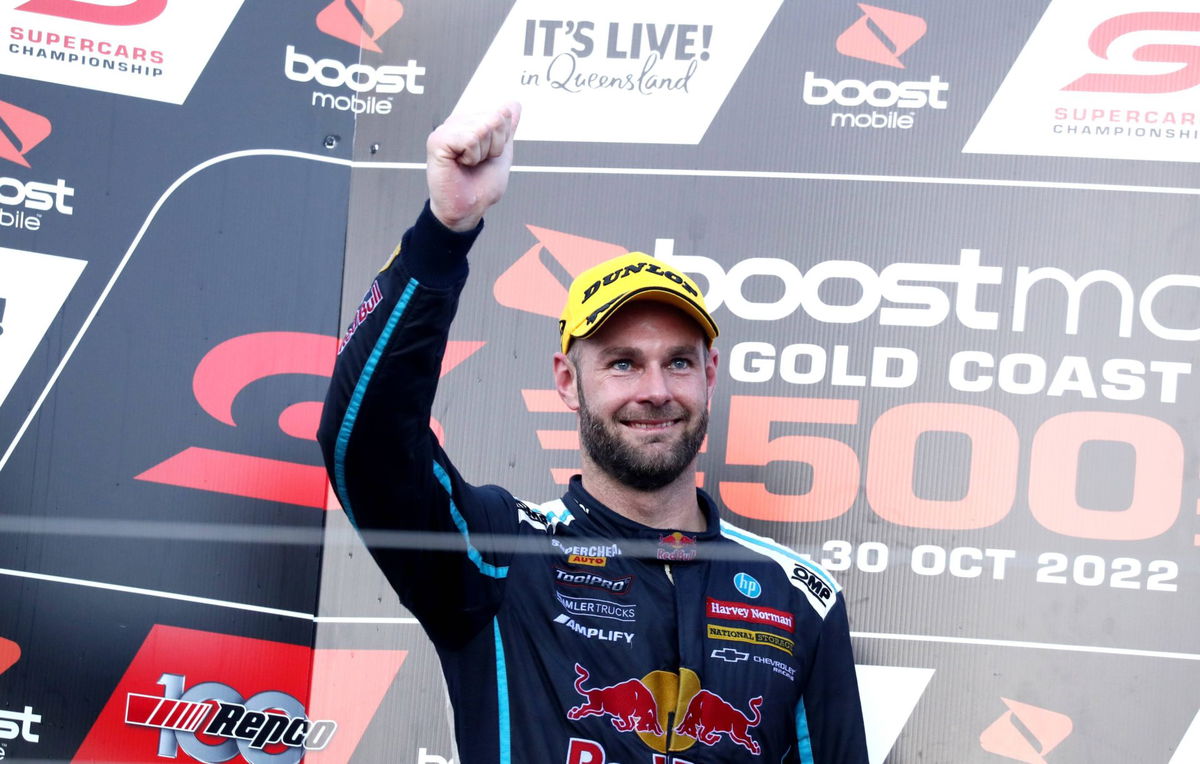
Imago
SUPERCARS GOLD COAST, Shane Van Gisbergen celebrates after winnig race 32 during the Gold Coast 500, as part of Supercars Championship, at Surfers Paradise Street Circuit on the Gold Coast, Sunday, October 30, 2022. ACHTUNG: NUR REDAKTIONELLE NUTZUNG, KEINE ARCHIVIERUNG UND KEINE BUCHNUTZUNG GOLD COAST QLD AUSTRALIA PUBLICATIONxINxGERxSUIxAUTxONLY Copyright: xJASONxO BRIENx 20221030001723607210

Imago
SUPERCARS GOLD COAST, Shane Van Gisbergen celebrates after winnig race 32 during the Gold Coast 500, as part of Supercars Championship, at Surfers Paradise Street Circuit on the Gold Coast, Sunday, October 30, 2022. ACHTUNG: NUR REDAKTIONELLE NUTZUNG, KEINE ARCHIVIERUNG UND KEINE BUCHNUTZUNG GOLD COAST QLD AUSTRALIA PUBLICATIONxINxGERxSUIxAUTxONLY Copyright: xJASONxO BRIENx 20221030001723607210
Driving the average Toyota Sienna and sitting behind the V8 engine that generates a horsepower of over 700 are poles apart. While they built the street cars that we drive to run tens and thousands of kilometers, race cars have been designed to be driven extremely hard but for a short period of time. Hence, it is quite normal that NASCAR drivers receive special training for handling such beasts along oval, rectangular, and D-shaped racetracks.
Watch What’s Trending Now!
A lot goes into driving racecars. In a recent episode of the Dale Jr. Download, Kiwi superstar Shane Van Gisbergen leaked his secret from the Grant Park 220 race in Chicago and how his expertise with street courses had given him an edge over other NASCAR drivers.
ADVERTISEMENT
A decade of experience driving V8 supercars paid off Shane Van Gisbergen on the tracks of NASCAR
A few minutes into the podcast, Dale Earnhardt Jr. brought up the frequently debated topic of heel-and-toe and whether it was crucial for NASCAR drivers. Heel-and-toe is a technique that drivers use on cars with manual transmissions to help smooth the downshifts while making a turn. So, as the lower gear is engaged, the car can be in its optimal rev range, meaning smoother and quicker acceleration out of the corner. However, with the dawn of the next-gen cars, there are hardly any scopes for manual transmissions in NASCAR, so drivers probably do not need to stress a lot about the heel-and-toe method.
About 3 or 4 years ago, even Dale Jr. was a stranger to how this technique could affect the balance of a Supercar. He said, “There was a bit of a debate about 2 or 3-4 years ago in the Supercar about paddles and shifting and how that would affect takeaways and tools: heel and toe. And so Paul (Morris) put this video out driving around this course, showing why heel-and-toe is important, why it makes a driver unique, and how a driver uses it to change the balance of the car… I never heard it, I never knew it.”
ADVERTISEMENT
ADVERTISEMENT
The New Zealander explained that Australian Supercars needed it because of the rigidity in their axle locks. They turn their cars, leveraging most of the rear brakes, and then use the clutch to take away any lock in the rear brake along the straight lines. He is a master of driving on road courses that contain debris and bumps, unlike the speedways in NASCAR. Hence, his run along the street course of Chicago was smoother despite the bumps. Ironic, right?
Why is it that road courses are SVG’s forte? He said that while the other drivers were struggling with the bumps; it was normal for him. So, he could use a bit of the heel-and-toe method to ease his car into absorbing the compressions. The three-time Supercar Championship winner explained, “I guess it was a bit helpful… all the bumps. You can just dip the clutch over the bumps and it takes away all the compression. It does make a big difference.”
Watch this story: Despite Beefing up Security With 900 Guards, Fans Brutally Troll NASCAR for Various Numbers of Security Breaches During the Chicago Race
ADVERTISEMENT
While Chicago was most likely an easy win for the 34-year-old, driving on ovals has him worried for a different reason. And it is about the automatic transmission in NASCAR race cars.
Top Stories
Ross Chastain Labels NASCAR Driver “The Most Punchable Face” to Excuse Himself Over Punchgate Controversy

Commissioner Steve Phelps Quits NASCAR Days After Getting Exposed in Lawsuit Trial

Who Is Steve Phelps? NASCAR Commissioner’s Net Worth, Wife & NASCAR Contract

Jimmie Johnson Poaches Richard Childress’ Key Ally Ahead of NASCAR 2026 Season

3x NASCAR Champion Tony Stewart Returns To His Roots Weeks After Losing NHRA Seat

Van Gisbergen’s new challenge as a full-time NASCAR driver
Traditionally, a NASCAR driver would always use their left foot for changing gears and their right foot for braking. In today’s automatic cars, drivers typically use their left foot to brake. In the aforementioned video, Paul Morris explained the disadvantages of using the left foot for braking.
ADVERTISEMENT
Paul said, “Most cars have a footrest right here on your left-hand side near the tunnel. Now to me, I always keep my foot there and use it as a balancing point. I’ve always got some sort of stability in my body and then I use my right foot to brake and accelerate, but I’ve got that left leg steadying my body. So if I’m going through a corner and particularly, breaking, I can use this left leg just to stabilize my body and be more comfortable”
ADVERTISEMENT
Dale Junior found this extremely interesting and texted Paul to exchange thoughts about it. However, the upcoming race at Indy has a new threat in reserve for Shane Van Gisbergen.
SVG said, “It’s what I’m used to: breaking with my right foot. This weekend on the track I think I got left-foot braking, it’s like a new skill I got to learn.”
ADVERTISEMENT
It is about time that NASCAR fans get to see how well SVG adapts to the new challenges that he is about to face while driving on ovals. We are as excited as you are about this weekend’s race. Stay tuned to NASCAR for more updates on SVG’s debut IndyCar race.
Read more: Dale Earnhardt Jr Believes Shane Van Gisbergen?s NASCAR Destination Is All Set
ADVERTISEMENT
ADVERTISEMENT
ADVERTISEMENT

